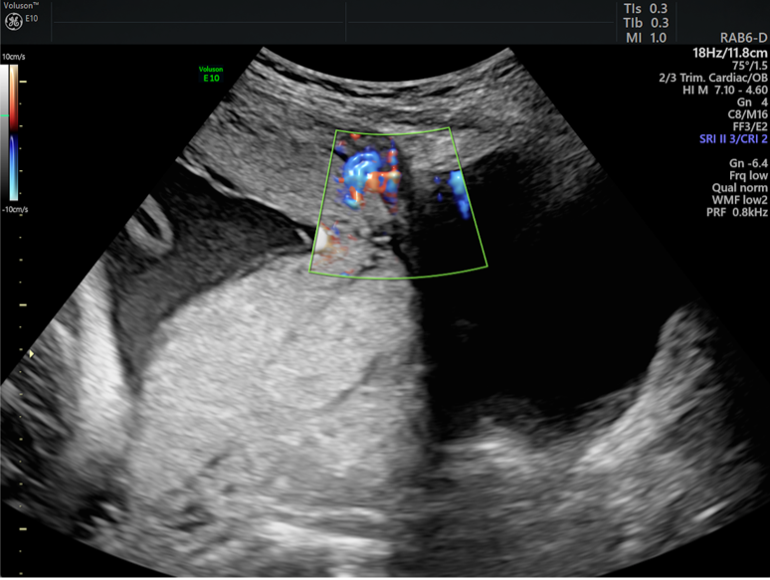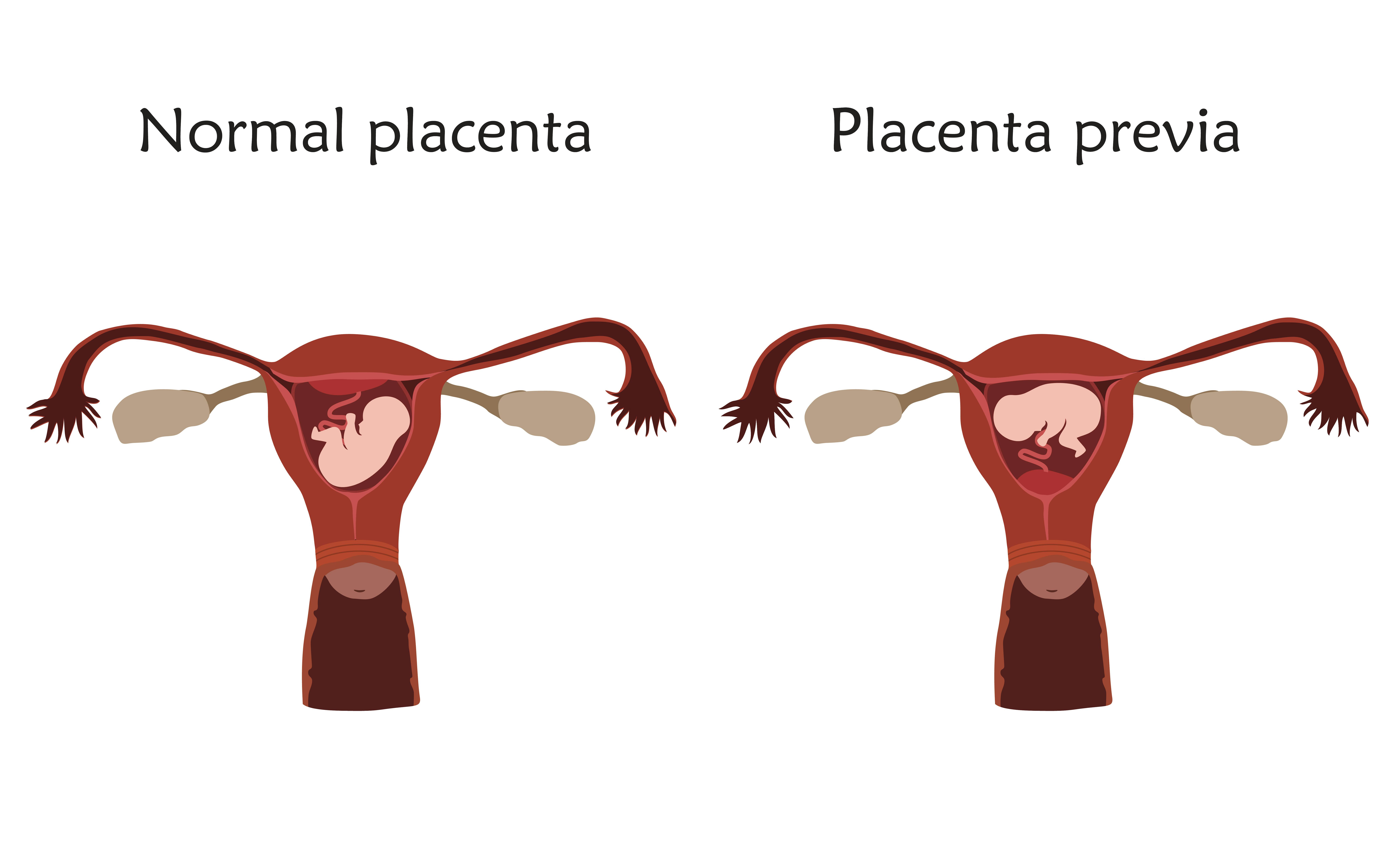Placenta previa is an abnormal pregnancy state when the placenta is implanted over the internal cervical os. Although this may not pose a significant risk during the pregnancy itself, this condition can be dangerous to the pregnant patient and the fetus if cervical dilation occurs during labour. In this case, massive hemorrhage at the interface between the placenta and endometrium can happen, compromising maternal and fetal health. Therefore, recognizing placenta previa on ultrasound is vital.
For this reason, patients with placenta previa are advised to not have a vaginal delivery, according to guidelines published in the Journal of Obstetrics and Gynecology Canada. Rather, the fetus must be delivered via a cesarean section, and often, slightly early (less than 38 weeks gestation). Any bleeding in pregnancy must be urgently evaluated to identify early signs of labor (whether preterm or term) or fetal compromise. With a cautious approach, pregnancy outcomes for those with placenta previa can be quite normal.
Differentiating Between Placenta Previa and Related Conditions
When assessing for placenta previa on ultrasound, specific measurements matter. When a placental edge is within 2 cm of the internal cervical os but not directly overlying it, the International Society of Ultrasound in Obstetrics and Gynecology uses the term low-lying placenta rather than placenta previa. Like placenta previa, low-lying placenta should spur special precautions, including planning a C-section delivery before 39 weeks gestation.
In almost all cases of low-lying placenta identified in the second trimester, there is resolution (movement of the placental edge away from the internal cervical os) by the third trimester. If the diagnosis of low-lying placenta is made during the third trimester, patients should undergo a repeat ultrasound within seven to 14 days to assess for resolution of the low-lying placenta state.
A separate state called placenta accreta spectrum can sometimes occur in patients with placenta previa and a previous history of undergoing a cesarean section. This potentially dangerous condition involves abnormal invasion of the placenta beyond the endometrium and sometimes into or beyond the myometrium, at the location of the C-section scar. Patients with placenta previa and a previous history of cesarean section should be carefully evaluated for placenta accreta spectrum, notes research from Ultrasound in Obstetrics and Gynecology.

To learn more about scanning the placenta in patients with previous caesarean section, view the Meet the Experts video below.
The connection between Cesarean Scar Pregnancy and Placenta Accreta Spectrum. Presented by Dr. Ilan Timor Tritsch.
Finally, vasa previa should similarly be on the radar of the healthcare team when placenta previa exists with the presence of a marginal/velamentous cord insertion or a succenturiate placenta lobe.
Best Practices for Identifying Placenta Previa on Ultrasound
Placenta previa can be easily diagnosed via ultrasound when the placenta is seen covering the internal cervical os. However, there are some important principles to remember.
Firstly, assessment for placenta previa (or low-lying placentas) should be done via transvaginal ultrasound. Second, the diagnosis of placenta previa should not be made at less than 20 weeks gestation. If a provisional diagnosis is made after this point, it should be confirmed after 32 weeks gestation, or earlier if the clinical situation warrants it. Again, this is because there is often movement of the placenta over the course of the pregnancy, and as the third trimester draws to a close, the placenta is often no longer in a worrisome position.
In general, the goals of the transvaginal ultrasound exam should be to:
- Clearly define the placental location (including laterality)
- Assess the characteristics of the placental edge (including thickness and presence of a marginal sinus)
- Note any associated findings (succenturiate lobe or cord insertion close to the cervix)
Once the diagnosis is made, patients, their family members and healthcare providers can all prepare. In the case of placenta previa, preparation is the key to optimizing maternal and fetal outcomes. Ultrasound is a key tool in the diagnosis and workup of placenta previa and should be readily adopted with modern, updated approaches across the world.




